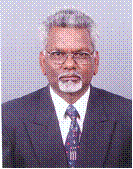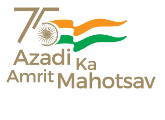Dr A K Saxena
 Ajay Kumar Saxena has been working in the field of Photonics Instrumentation and Optical Technology for the past 30 years. He obtained his M.Sc and Ph.D. degree in Physics from Lucknow University, India in 1968 and 1977 respectively. Early part of his research activities has been mainly directed towards developing some new polarization techniques for the study of refractive index fields.
Ajay Kumar Saxena has been working in the field of Photonics Instrumentation and Optical Technology for the past 30 years. He obtained his M.Sc and Ph.D. degree in Physics from Lucknow University, India in 1968 and 1977 respectively. Early part of his research activities has been mainly directed towards developing some new polarization techniques for the study of refractive index fields.
During the years 1974 to 1977 he had been working on instrumentation for high resolution spectroscopic observation of sun and stars. He has successfully performed experiments on high resolution spectroscopic studies of solar corona using multislit spectrograph and experiments on coronal oscillations using multi channel photometer and CCD imaging during four solar eclipses of the last century ,two on the Indian soil and one in Venezuela and last in Iran.
Since 1977, he has been involved in optical technology development and Instrumentation programmes including design, fabrication and testing of optics used in Astronomical observations and related applications. He has developed a new polarization interferometer technique using a simple device (Babinet Compensator) for the precise quantitative evaluation of optical surfaces and wavefront sensing in situation like active and adaptive optics systems.
He has set up Vacuum coating facilities at Indian Institute of Astrophysics. Setting up of 0.3M, 1.5M and 2.8M Vacuum coating plants and subsequent aluminizing of large mirrors up to 2.34M and various other types of optical coatings have been part of his responsibility. He played a major role in designing and monitoring the manufacture of the 2M vacuum coating plant for high altitude observatory at Hanle.
He has developed the technology for the fabrication of passive radiant cooler sun shield panels of highly specularly reflective surfaces for VHRR in INSAT Series of satellite. It is an import substitute resulting in large savings in foreign exchange. Successful performance of VHRR in INSAT 2A, 2B, 3A and METSAT speaks of the quality and performance of the radiant cooler. Presently engaged in the development of sunshield panels for INSAT – 3D imager and sounder coolers.
He has been conferred the 1994 Republic Day Award of the National Research Development Corporation for the innovative invention work related to the passive radiant cooler used in VHRR of INSAT II series of satellites.
He has been part of Ultra Violet Imaging Telescope (UVIT) – ASTROSAT (Indian Astronomy Satellite to be launched in 2006) team.
Recently he has developed a Long Trace Profilometer (LTP) for measuring the slope errors /surface profile of long grazing incidence optics based on polarization shearing interferometer. The accuracy and sensitivity of this instrument matches with the best elsewhere in the world.
Currently he is spearheading a group on Adaptive Optics in the institute. Research is directed towards building a low cost adaptive optics system for astronomical applications. Using a Shack Hartmann sensor and CMOS detector, a laboratory model has been successfully built. Efforts are on to reduce the closed loop timing to within 20 millisecs. Research work is in progress to build a new wavefront sensing using polarization shearing interferometric technique.
He has served as a visiting Professor, from 14th July to 16th December 2003 for a period of 5 months at University of British Columbia, Vancouver, Canada. During this period has worked on the optical design of Large Aperture Mirror Array (LAMA) telescope project.

